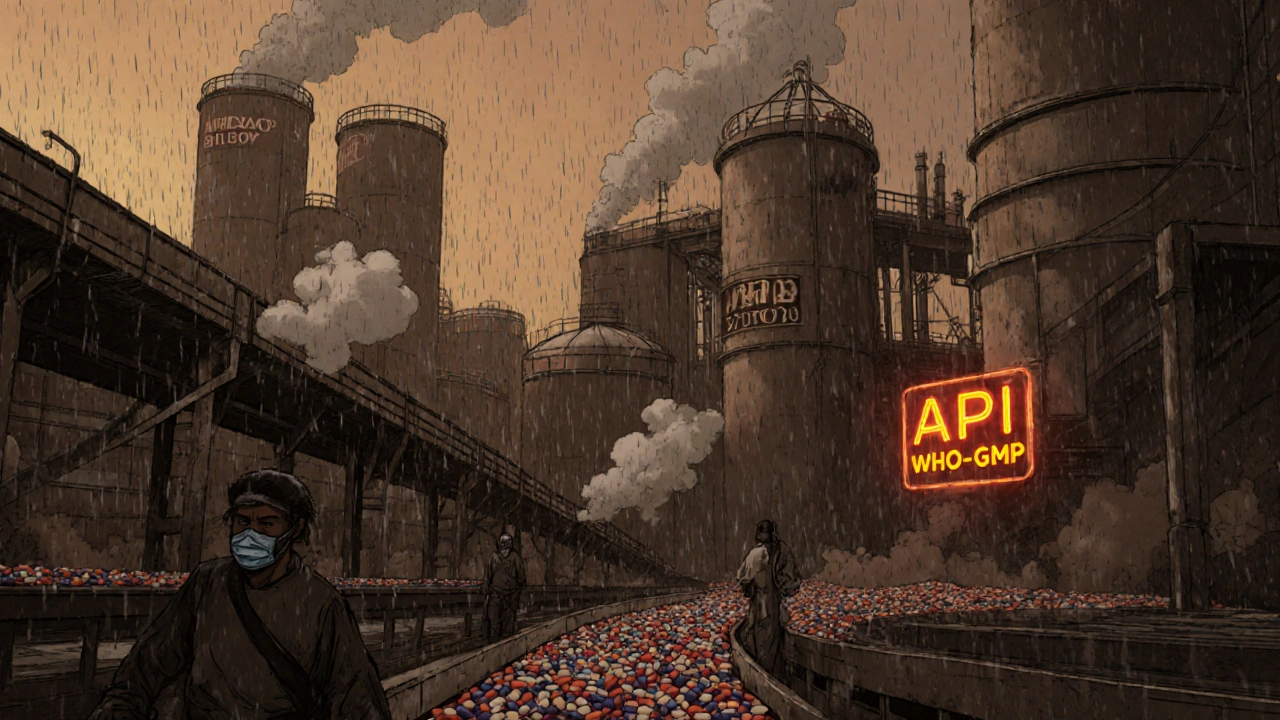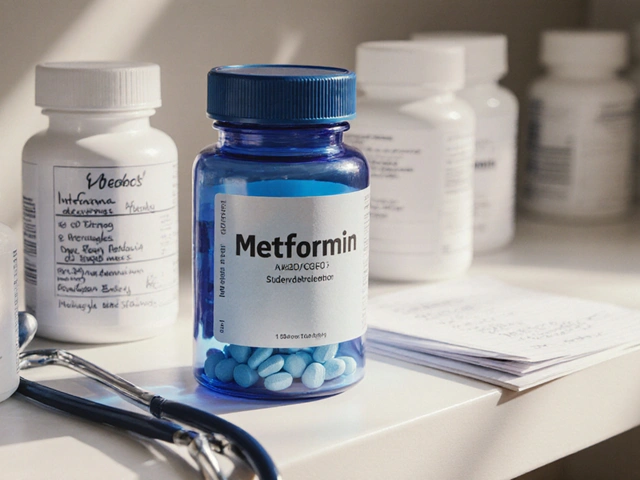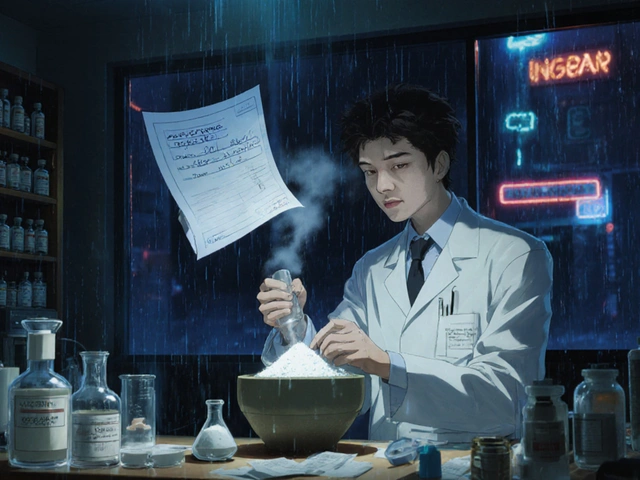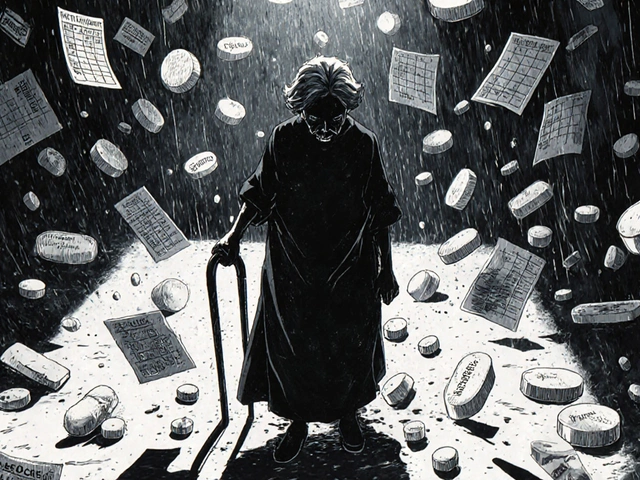When you pick up a bottle of antibiotics, blood pressure medicine, or a generic version of a brand-name drug, there’s a good chance it came from Asia. India and China aren’t just players in the global generic drug market-they run it. Together, they supply over 70% of the world’s generic medicines and nearly 70% of the active ingredients that make them work. But behind this dominance is a complex, high-stakes game of cost, quality, regulation, and strategy-and emerging economies like Vietnam and Cambodia are starting to carve out their own roles.
India: The Pharmacy of the World, Built on Cost and Volume
India’s rise as the top exporter of generic drugs didn’t happen by accident. Back in the 1970s, the country changed its patent laws to allow companies to copy drug formulas as long as they used a different manufacturing process. That decision, pushed by Prime Minister Indira Gandhi, turned India into the go-to source for cheap, life-saving medicines. Today, it supplies over 60% of the world’s generic vaccines and 40% of all generic drugs sold in the U.S.
India’s pharmaceutical market hit $61.36 billion in 2024, with 75% of that coming from conventional generics. The real strength? Volume. India produces more generic pills than any other country. It’s the top global supplier for complex generics like cancer drugs, holding a 35% share of that market. And it’s not just big pharma-small manufacturers in Gujarat and Maharashtra churn out millions of doses daily, often at prices 60-70% lower than Western competitors.
But there’s a catch. India’s edge is built on low margins. It ranks 3rd in production volume but only 14th in market value. Most of its exports are simple, low-cost pills. Only 1.2% of its pharmaceutical exports are novel drugs. And here’s the ironic twist: India imports 68% of its own active pharmaceutical ingredients (APIs) from China. That means for all its manufacturing power, it’s still dependent on its neighbor for the core building blocks.
China: The Hidden Engine Behind Every Generic Pill
If India makes the pills, China makes the powder inside them. China controls about 70% of the global API market-the raw chemicals that turn into medicine. Without Chinese APIs, most generic drugs worldwide wouldn’t exist. That’s not a coincidence. After joining the WTO in 2001, China poured billions into chemical production, scaling up factories in Jiangsu, Zhejiang, and Shanghai. Today, it’s not just making cheap APIs-it’s moving up the value chain.
China’s pharmaceutical market is bigger than India’s: $80.4 billion in 2024. But what sets it apart is structure. Only 60% of its market is made of conventional generics. The rest? Traditional Chinese medicine (25%), biologics (10%), and innovative drugs (5%). Since 2020, 45% of new pharma facilities built in China have been for biologics-complex, high-value drugs that treat cancer, autoimmune diseases, and rare conditions. The government’s 14th Five-Year Plan is throwing $150 billion at biologics R&D.
China’s FDA approval timeline has dropped from 24 months in 2018 to just 9 months in 2024. That’s faster than India’s 18-24 months. And while China used to be known for quality issues-142 FDA warning letters in 2024, compared to India’s 87-it’s investing heavily in compliance. Many Chinese manufacturers now meet or exceed U.S. and EU standards. The problem? Cost. Chinese APIs are often 20% cheaper than Indian ones. But that low price comes with risk. Many U.S. pharmacies now dual-source-getting 40-60% of their generics from India and 25-35% from China-to avoid being stuck if one supplier fails.
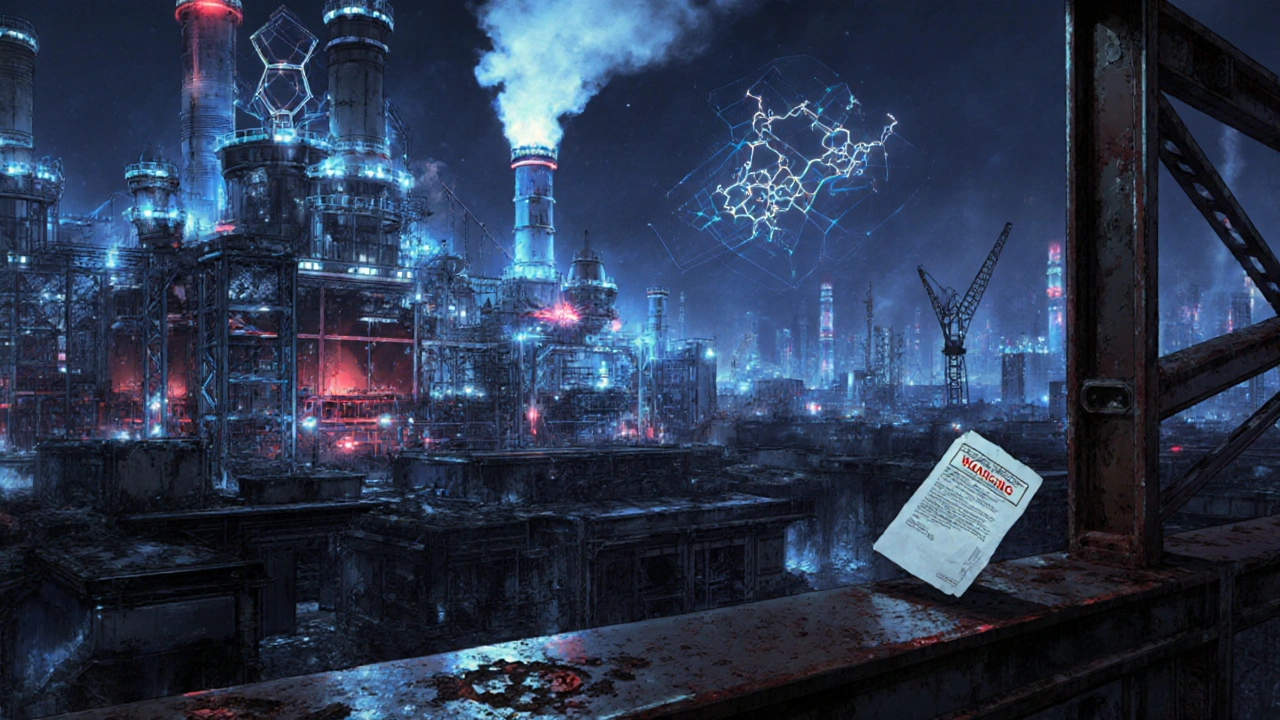
Emerging Economies: The New Wild Cards
India and China aren’t the only ones playing the game anymore. Countries like Vietnam and Cambodia are stepping in with niche strategies.
Vietnam’s pharmaceutical market grew 12.3% annually from 2020 to 2024. It’s not making full pills yet-it’s specializing in antibiotic intermediates, the chemical steps before final drug production. In 2024, its pharmaceutical exports hit $2.8 billion, up 24.7% from the year before. It’s not trying to beat India or China on scale. It’s beating them on speed and specialization.
Cambodia, meanwhile, is focusing on medical device assembly. With ASEAN trade deals giving it tariff-free access to major markets, its medical device sector hit $1.2 billion in 2024, growing 32% year-over-year. It’s low-tech, low-cost, and high-demand. Hospitals in Southeast Asia and Africa need cheap syringes, IV bags, and diagnostic tools-and Cambodia is filling that gap.
These countries aren’t replacing India or China. They’re becoming the backup plan. When supply chains get strained, buyers turn to these smaller players for flexibility.
Who Wins? Volume vs. Value
India and China aren’t competing the same way. India wins on volume. China wins on value. India exports $24.2 billion in pharmaceuticals-87% of it generics. China exports $48.7 billion, but only 63% is generics. The rest? Higher-margin products like biologics and patented formulations.
India’s growth forecast is higher: 8.1%-11.32% CAGR through 2030. But China’s growth is on a much larger base. By 2030, China’s market is expected to hit $126.6 billion. India’s will reach $130 billion. The difference? China is moving into drugs that make more money per pill. India is still selling millions of low-cost tablets.
That’s why investors are watching China’s biologics push closely. If China can turn its API dominance into branded biosimilars-cheaper versions of expensive biologic drugs-it could take over a $200 billion global market by 2035. India’s trying to catch up, but it’s playing catch-up with fewer resources. Only 15% of its manufacturing facilities can handle biologics. China has over 40%.
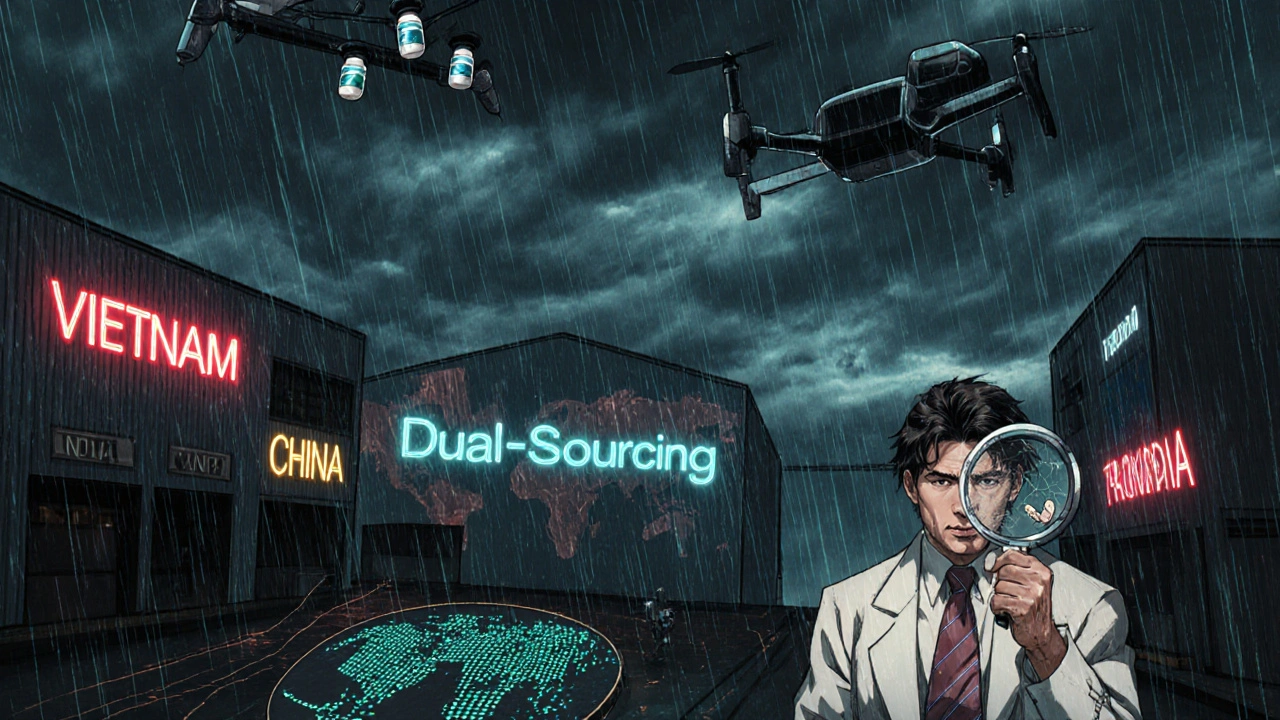
The Real Challenge: Quality vs. Cost
Buyers don’t just care about price. They care about reliability. And here’s where things get messy.
Indian suppliers score higher on customer service. A U.S. pharmacy chain reported a 60% drop in operational issues because Indian companies offer 24/7 support. Procurement managers say Indian firms respond to custom requests in 14 days. Chinese firms take 30-45.
But Chinese suppliers win on price. One German healthcare company said switching from Indian to Chinese APIs saved 20%-but forced them to triple their batch testing because of quality inconsistencies. That added 18% to their supply chain costs.
Regulation is another headache. India has 650 WHO-GMP certified plants. China has 420. But China’s system is centralized. One national agency, the NMPA, sets the rules. India has 17 different regulatory bodies-federal, state, local. That means delays. 47% of procurement officers say Indian approvals are slowed by bureaucratic red tape.
And then there’s the API dependency. India’s goal? Reduce its reliance on Chinese imports from 68% to 30% by 2030. It’s building 12 new API parks and spending $13.4 billion to make its own. But that’s expensive. S&P Global warns that if both countries try to become self-sufficient at the same time, it could trigger a 15-20% drop in API prices by 2027 as supply outpaces demand.
What’s Next? Dual-Sourcing Is the New Normal
The era of relying on one country for your generics is over. The U.S. FDA’s Project BioSecure, launched in late 2024, now demands full traceability of every API-from the chemical plant to the pill bottle. That’s expensive. It’s also forcing companies to diversify.
Today, 68% of major U.S. pharmacy chains source generics from both India and China. Some use Vietnam for antibiotics. Others turn to Cambodia for basic medical supplies. It’s not about picking a winner. It’s about building resilience.
India’s strength? Speed, responsiveness, and a massive workforce. China’s strength? Scale, infrastructure, and a clear path into high-value drugs. The future belongs to companies that use both.
For buyers, the lesson is simple: Don’t bet on one supplier. Don’t assume low price means low risk. And don’t ignore the smaller players-they’re the safety net when the big ones stumble.
By 2030, the global generics market will hit $600 billion. Asia will still supply most of it. But who gets the biggest slice? That depends less on who makes the most pills-and more on who can make them safely, reliably, and smartly.
